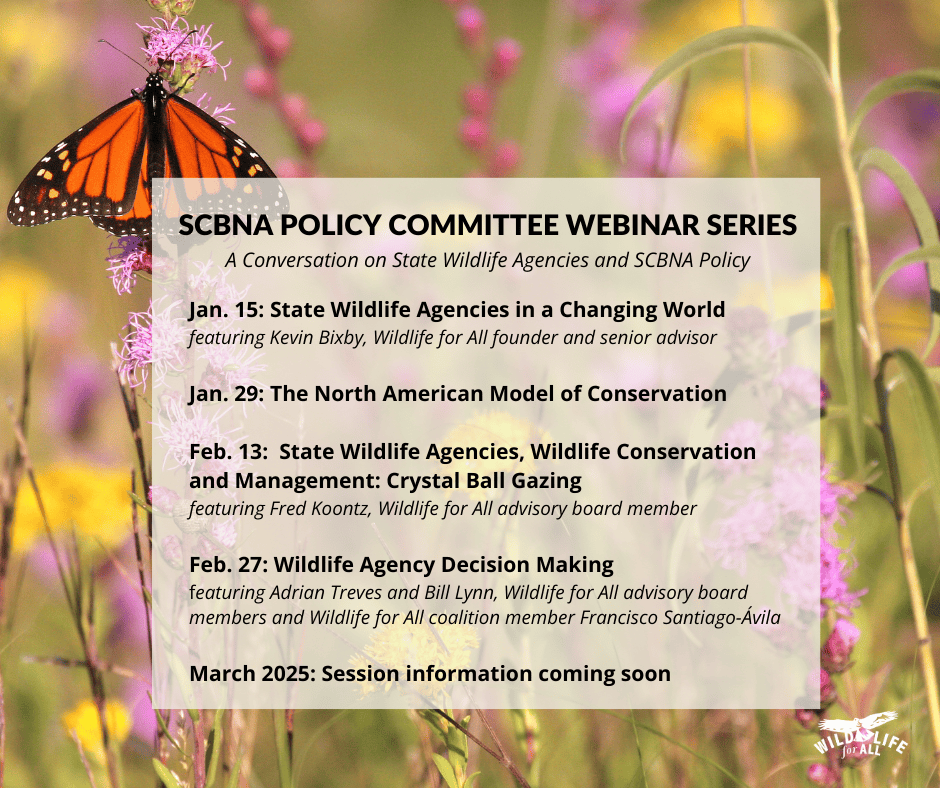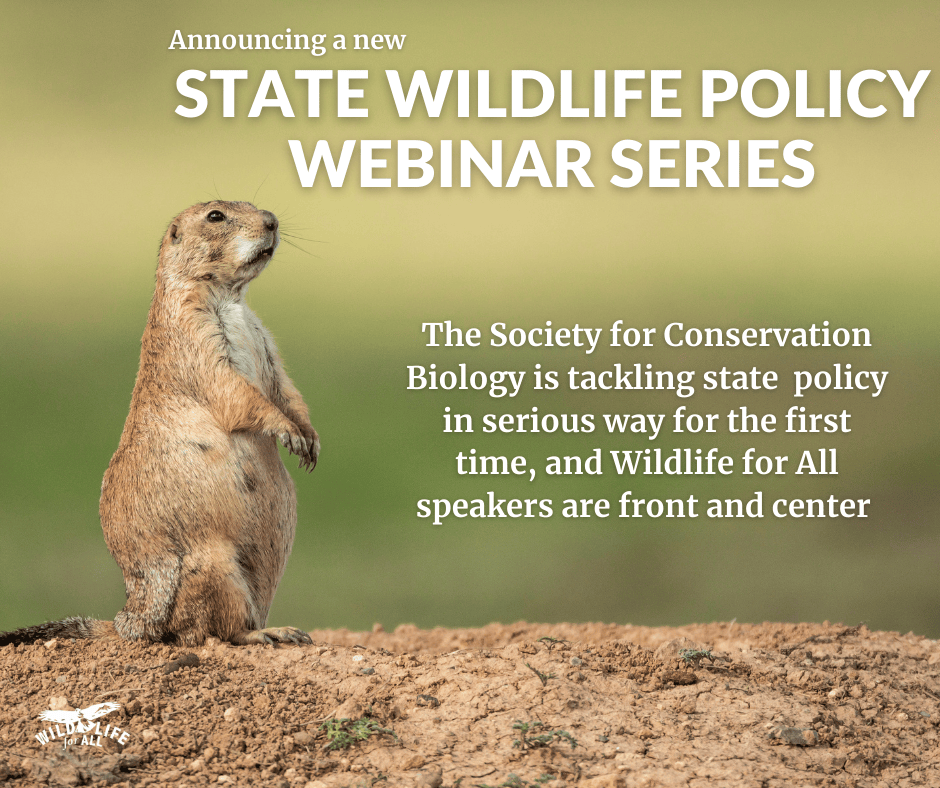Society for Conservation Biology announces webinar series on state wildlife governance reform
For years, many of us in this field have talked about the need for wildlife governance reform. We’ve called for more inclusive decision-making processes, more attention to the accelerating loss of biodiversity and breakdown of ecosystems, and better integration of science and public values. But progress has been slow, often stymied by entrenched interests and a lack of bold, innovative thinking.
That’s why the upcoming webinar series on state wildlife governance reform hosted by the Society for Conservation Biology North America (SCBNA) feels like such a profound moment. It’s not just another event or opportunity to hear experts share their knowledge; it’s a chance to fundamentally rethink how we approach wildlife conservation and management.
SCBNA is the premier professional organization for conservation scientists and practitioners in North America. While the Society occasionally weighs in on public policy matters, it has seldom taken a position on state wildlife issues. The fact that it is showing an interest in getting more engaged at the state level is encouraging, since states (not the feds) are the main drivers of wildlife policy in the U.S., and many state wildlife agency decisions are not grounded in the best science.
In addition, given the stature of the speakers and their affiliations, coupled with the stellar reputation of SCBNA, the series is likely to attract a wide audience, including many people who may not understand the nature of state wildlife management and how it is failing to protect biodiversity in the face of a global extinction crisis. I encourage everyone to register for each webinar and tell your friends and networks about the series.
But most importantly, this series on wildlife governance reform at the state level represents a departure from the status quo. It’s a space where critical questions are finally being asked: How do we shift from a narrow focus on game species to a more holistic approach that protects biodiversity? How can we ensure that wildlife management reflects the values and needs of all people, not just a select few? And what do conservation and coexistence really mean?
 All of the speakers are well-known in the field of state wildlife management, including several Wildlife for All advisory committee members. I’m tremendously honored that I have been asked to be a presenter as well. My talk will focus on the need to reform state wildlife management to address the current extinction crisis and align with modern science and changing public values.
All of the speakers are well-known in the field of state wildlife management, including several Wildlife for All advisory committee members. I’m tremendously honored that I have been asked to be a presenter as well. My talk will focus on the need to reform state wildlife management to address the current extinction crisis and align with modern science and changing public values.
What excites me most is the focus on dialogue. These webinars are not just diagnosing the problems in our current system; they’re exploring pathways for change. Participants will hear from a diverse range of experts, advocates, and thinkers who are already challenging the status quo and building models for a better future, as well as some who are architects and ardent defenders of the status quo.
While the webinars are not exactly debates, the speakers were selected for their divergent views on the question of how well the status quo in wildlife conservation is working. It is a safe bet that conventional wisdom and assumptions will be challenged regarding the meaning of conservation, the virtues of the North American Model of wildlife conservation, and other topics.
As someone who has spent years advocating for reforms in state wildlife governance, I see this series as a turning point. It’s a recognition that the old ways of doing things are no longer enough and that real, systemic change is necessary if we’re going to address the challenges of the 21st century.
But it’s also a call to action. Change doesn’t happen on its own—it requires people who are willing to ask hard questions, challenge outdated norms, and work together to build something better.
I encourage everyone—whether you’re a seasoned conservation professional or someone who simply cares deeply about wildlife and the natural world—to take part in this series. It’s a chance to learn, to be inspired, and to help shape the future of conservation.
Kevin Bixby
Founder and Senior Advisor, Wildlife for All
The four-part series begins on January 15. All the webinars are free and open to the public. You can learn more and register here.

